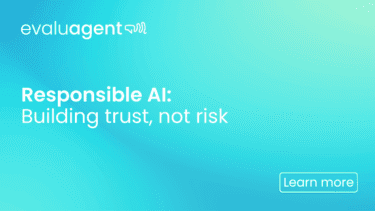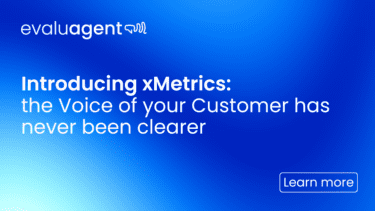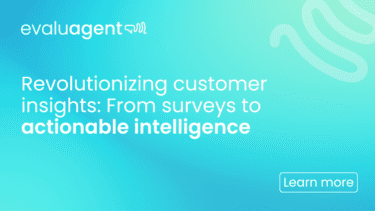There’s no doubt about it – One-to-Ones are one of the foundational pillars of strong contact centre performance.
Without a clearly defined commitment to One-to-One sessions with your frontline agents, you have limited opportunity to identify improvement areas, provide targeted coaching and improve agent performance over time. You’ll also starve your agents of the recognition and support needed for strong employee engagement.
This is why many sources confirm that contact centres who ensure high quality One-to-Ones are frequently held see increased customer satisfaction and loyalty, whilst reducing costs associated with agent turnover and other operational inefficiencies.
So, why aren’t One-to-Ones at the top of the to-do list of every Contact Centre leader?
Often, it’s a case of not knowing how to navigate the obstacles in their way. The good news is that these obstacles, whilst they might seem insurmountable, can be overcome with the right approach.
Below, we discuss three major reasons why your Team Leaders aren’t holding regular One-to-Ones with their agents, and how you can support them.
1. Your Team Leaders Don’t Understand What They Should Be Doing
Perhaps you have no set meeting structure, or perhaps several different structures have developed in different areas of your contact centre. Perhaps you rely on your coaches to be able to produce results from one to ones, with no clear guidance on how to do so.
This is dangerous because it makes call center coaching sessions an uninviting (and perhaps intimidating) task for your line managers – so they are less likely to complete them.
It also means that you limit the insights you can gain from the One-to-One data you gather. If each team leader structures one to ones differently, or has different goals for their coaching strategy, this makes analysing data from one to ones (to gauge centre-wide improvements for example) next to impossible.
Solution: build a one to one template that all coaches across your contact centre can use.
A one to one template gives team leaders a predetermined structure to work through in the sessions they run. Having a predetermined structure takes the heat off coaches and allows them to focus on the conversation at hand, rather than worrying about what they need to cover.
From a business perspective, it also ensures uniformity of the data you receive from One-to-Ones, ensures they are of higher quality and that the conversations are actionable . All teams run one to ones in the same manner, so it’s easy to measure the results you get from One-to-One meetings and ensure that quality is improving.
2. Your Team Leaders Don’t See The Benefit of One to Ones
Without access to the right data, it’s easy for team leaders to dismiss your requirement for One-to-Ones as just another pointless hoop they need to jump through.
Your team leaders are busy people. They’re likely to be chasing their own targets as well as managing the performance of the agents they manage. Any tasks that can’t show a tangible benefit on completion are likely to be deprioritised.
Solution: give team leaders a real-time view into their team’s performance.
Rather than leaving your team leaders in the dark, give them instant, real-time access into how their team is performing across your contact centre’s key metrics.
An at-a-glance dashboard on your contact centre or QA software is a great way to do this. Not only is it instantly readable and accessible; it also allows team leaders to directly track the effort they put into one to one meetings with agents, showing concrete payoff for their effort.
If, for example, your team leaders could see a direct improvement in CSAT scores or a reduction in repeat contacts as a result of the time they put into one to ones, they are much more likely to buy into the strategy.
3. Your Team Leaders Know What They Should Be Doing, But Think They Are Bad At It
Underconfidence can be a major obstacle when it comes to implementing a successful One-to-One policy.
This is because underconfidence makes it more likely that your team leaders will delay or postpone one to ones. A lack of confidence will also affect how effective the feedback itself is – the right feedback can and will be ignored if delivered ineffectively.
The solution: feedback and learning opportunities – and plenty of them.
Check in with your team leaders. Ask them how their one to ones have been going, look through the records of each session, provide feedback and hold One-to-Ones with them too. Remember: they are your employees too, and benefit from positive reinforcement, support and feedback as much as your agents do. Where appropriate, you could offer training in delivering feedback effectively to help managers gain confidence in this area.
Another great source of feedback is your agents themselves. Check in with them regularly – do they feel their one to ones are valuable? Is there anything more they would like to be able to achieve with them? Incorporate this 360 feedback into training for managers to make sure everyone is satisfied with the outcomes from the time they put in.
Looking For A One-to-One Tool That Overcomes These Barriers?
Our newly launched One-to-Ones and Actions tool enables your team leaders to schedule, run and follow up on One-to-One meetings.
This pulls in data from your QA process so that team leaders can schedule meetings focused around specific topics, feedback or performance data. When paired with a library of prebuilt or custom one-to-one templates, this frees your team leaders to focus on the conversation, rather than worrying about what to say or how to structure the meeting.
Contact centre leaders have full visibility over the quality of one to ones and coaching, with the ability to track completed actions for further granularity of insight. Meanwhile agents can fully interact with meetings and actions, allowing them to take their employee development into their own hands.
Overall, this leads to higher levels of engagement across the contact centre (from agents and team leaders alike), which in turn improves organisation-wide performance whilst reducing employee turnover.




